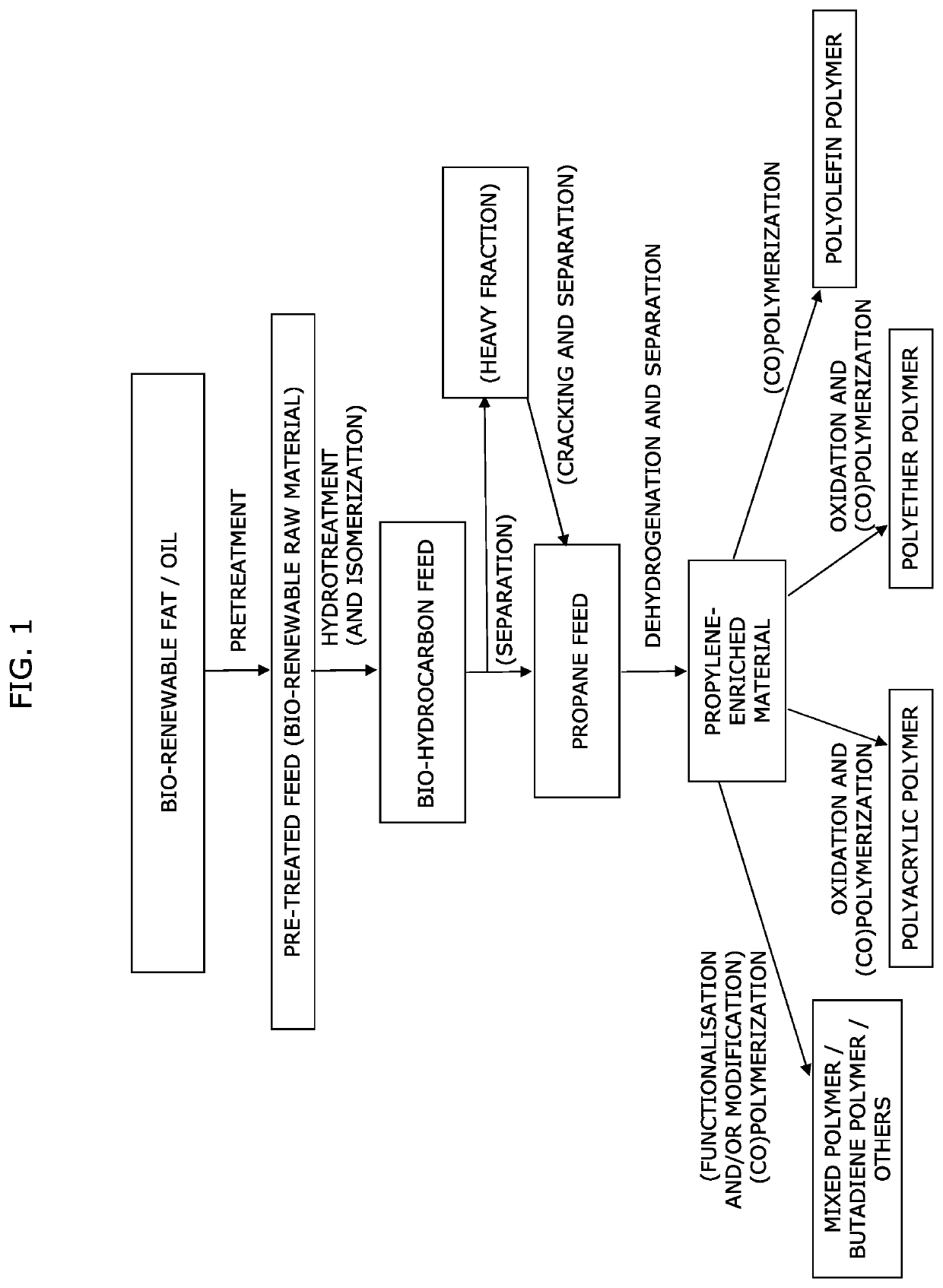Method to produce bio-renewable propylene from oils and fats
a technology of bio-renewable propylene and oil, which is applied in the direction of organic chemistry, hydrocarbon oil treatment products, chemical apparatus and processes, etc., can solve the problems that the available methods for producing bio-based polypropylene, propylene oxide or acrylic acid have only limited value for industrial scale production
- Summary
- Abstract
- Description
- Claims
- Application Information
AI Technical Summary
Benefits of technology
Problems solved by technology
Method used
Image
Examples
examples
[0175]Animal fat (AF) originating from food industry waste and crude palm oil (CPO) were blended to give a mixture of 50 wt-% AF and 50 wt-% CPO. This bio-renewable oil / fat raw material was first pre-treated to remove elemental impurities by bleaching. After this the pre-treated raw material stream was processed through hydrodeoxygenation (HDO) to produce a bio-hydrocarbon feed under the conditions specified below. The bio-hydrocarbon stream was separated and purified to provide a propane feed. Table 1 shows the heteroatom impurities in the bio-renewable oil / fat raw material prior the pre-treatment.
Bleaching
[0176]The bio-renewable oil / fat raw material was bleached by adding to the heated raw material 2000 ppm citric acid, 0.2 wt-% water and 1 wt % bleaching earth. These were mixed for 20 min at 80° C. after which the material was dried using reduced pressure and filtered.
[0177]The pretreated raw material was then hydrodeoxygenated in the presence of hydrogen and ca...
PUM
| Property | Measurement | Unit |
|---|---|---|
| Fraction | aaaaa | aaaaa |
| Fraction | aaaaa | aaaaa |
| Fraction | aaaaa | aaaaa |
Abstract
Description
Claims
Application Information
 Login to View More
Login to View More - R&D
- Intellectual Property
- Life Sciences
- Materials
- Tech Scout
- Unparalleled Data Quality
- Higher Quality Content
- 60% Fewer Hallucinations
Browse by: Latest US Patents, China's latest patents, Technical Efficacy Thesaurus, Application Domain, Technology Topic, Popular Technical Reports.
© 2025 PatSnap. All rights reserved.Legal|Privacy policy|Modern Slavery Act Transparency Statement|Sitemap|About US| Contact US: help@patsnap.com

